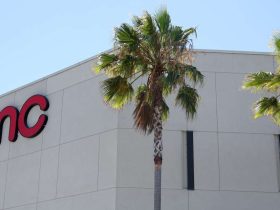It took a while, but utility stocks are finally starting to pop. They still look appealing even after a recent gain.
The Utilities Select Sector SPDR exchange-traded fund (ticker:
XLU
) is up 10% from a 52-week low hit on Oct. 2, crushing the
S&P 500’s
2% gain since that date. It marks a rebound from a slide that left the ETF with a 20% year-to-date loss.
High yields on long-dated government debt had made the stocks’ dividends—a major reason investors own the shares—less attractive. And the economy has kept growing despite fear of a recession, giving investors a reason to buy shares that benefit from that growth, while dumping the stable names—think utilities and consumer staples—that are best positioned to ride out a downturn.
What has changed lately is that bond yields have come down. The yield on 10-year Treasury debt was at 4.59% on Tuesday afternoon, compared with nearly 5% in late October, adding to the appeal of dividend stocks.
The other part of the picture is that utility stocks’ slide since the start of the year has left the shares relatively cheap. The utility fund trades at about 15.6 times expected earnings per share for the next 12 months, near the bottom of its five-year range. That is a 14% discount to the S&P 500’s 18.1 times. For context, utilities can trade at a premium to the index when the sector is firmly in favor.
Barron’s said early last week that bond yields were on the decline, which would send utility stocks upward. That is exactly what has happened, but the rally could have more legs.
First, the 10-year Treasury yield could keep falling. At about 4.6%, the 10-year note is still yielding more than 2 percentage points above the expected average annual rate of inflation for the next 10 years. That additional yield, near the high end of the range since the 2008-2009 financial crisis, still looks appealing, which should bring in more buyers.
That would lift the debt’s price and lower the yield.
Not only are the stocks relatively inexpensive, earnings are growing, so investors have a reason to hold them for the long term. The companies are building new clean-energy plants faster than they are retiring old ones. As their assets grow, profits increase because states allow them to charge enough to earn a certain percentage of net assets. That points to higher dividends.
But not all utilities are equal. To find the strongest ones, Barron’s looked for those that have participated in the sector’s outperformance versus the S&P 500 since Oct. 2—an indication that if utilities keep beating the broader market, those companies will do so as well. We also screened for companies whose earnings are expected to grow and whose stocks trade for lower multiples of per-share earnings than the S&P 500 as a whole.
Dominion Energy
(D) is an example. The utility, which has a market value of $31.2 billion and focuses on Virginia and South Carolina, has total assets of just over $104 billion. Analysts expect that to grow to about $114 billion by 2027, according to
FactSet.
That would lift earnings per share by almost 10% annually from the end of this year through 2027, FactSet data indicate.
Dividends are expected to grow, but slower than profits, partly because the company is prioritizing paying down its total debt of almost $50 billion via a sale of assets.
“As worries about uncertainties dissipate, the focus will turn to fundamentals that can be reflected in the valuation,” says Michel Sznajer, portfolio manager at Ecofin, an asset manager that invests in sustainable-energy companies.
Another is the $2.7 billion, Northwestern-focused
Avista
(AVA), which Barron’s recommended in September. The stock has been cheap because for several years, the company had refrained from requesting aggressive rate increases from states as it sought to sell itself to a Canadian utility.
Regulators blocked the deal, so Avista is now seeking permission to raise its rates.
Earnings per share are expected to grow a bit more than 4% annually for the next four years, with dividends growing just over 5%.
And there are more where those stocks came from. Two other companies that passed Barron’s screen are
Entergy
(ETR) and
Consolidated Edison
(ED).
Write to Jacob Sonenshine at jacob.sonenshine@barrons.com
Read the full article here













Leave a Reply